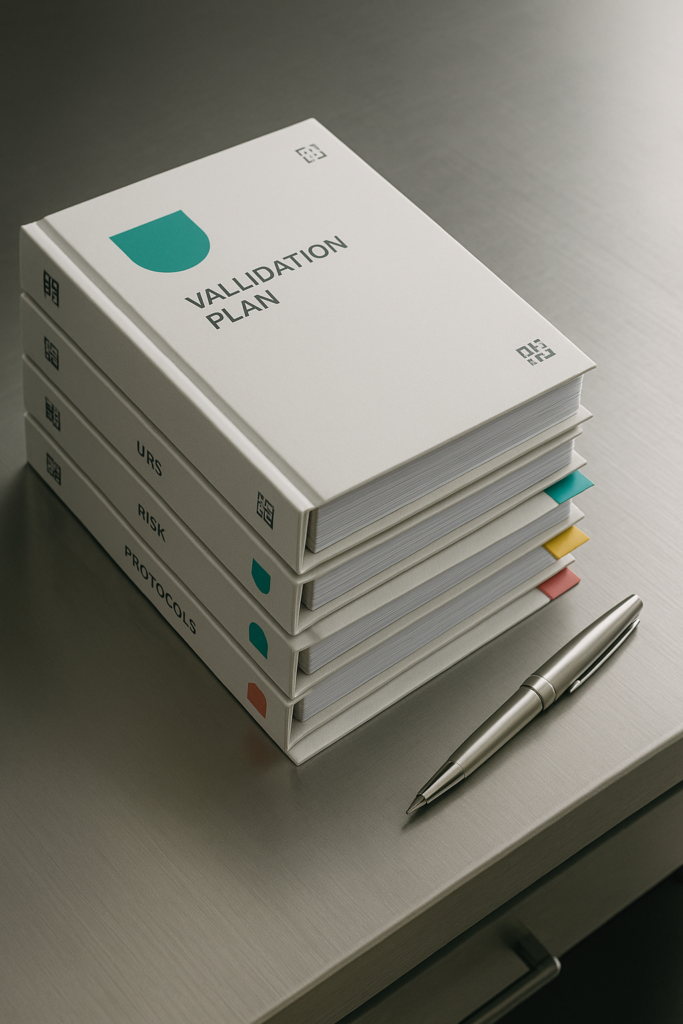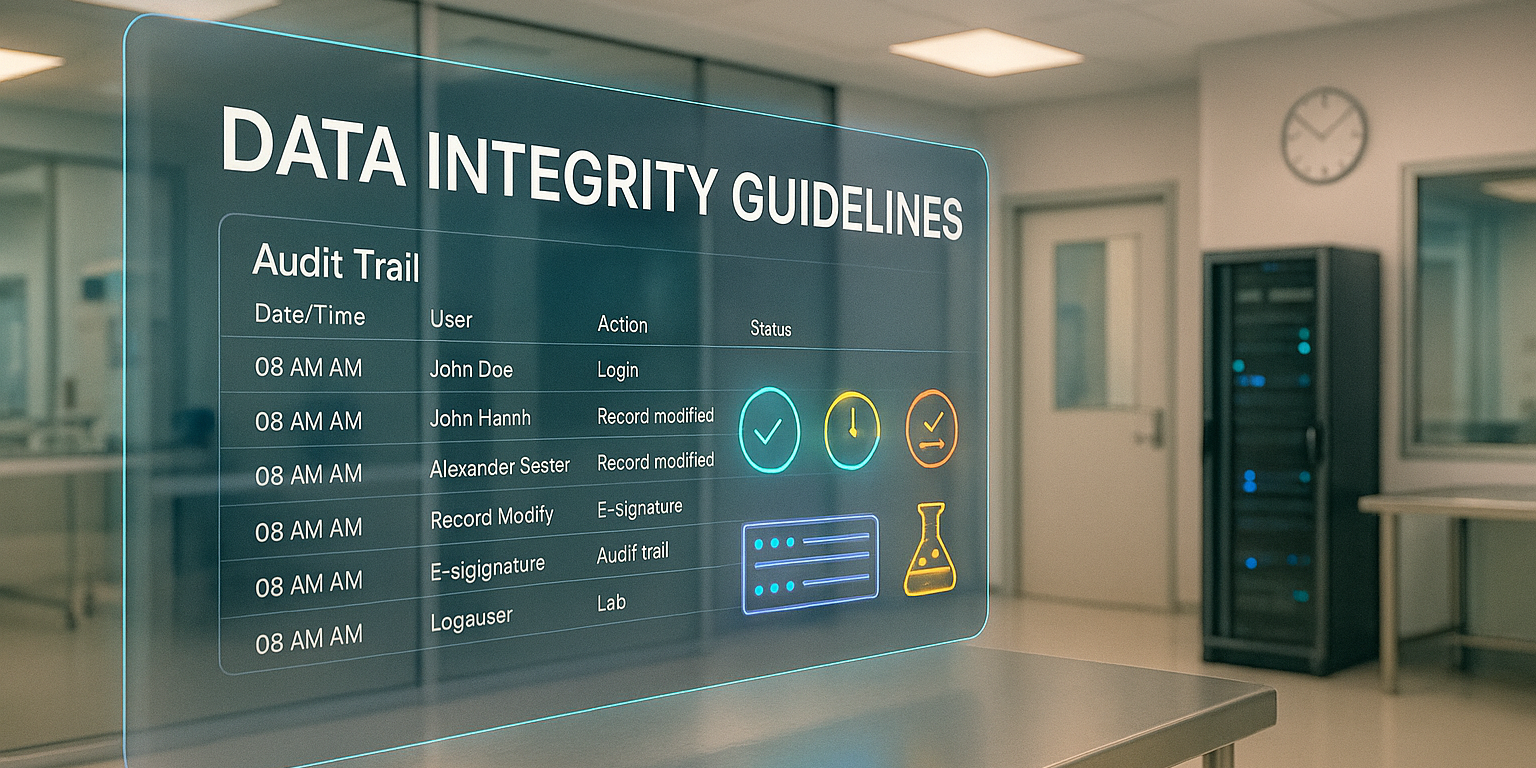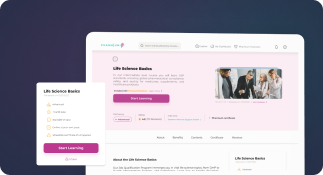Curious about the real differences between CSV vs. Annex 11? Regulators require clean, defensible evidence. Teams crave clarity now, not later. The key questions are, “What should we validate, and which rules apply?” This guide answers quickly. Expect a clear boundary between CSV and Annex 11. By the end, you’ll know how to align both without waste.
CSV defines the “how” of validation. Meanwhile, Annex 11 sets the “must” for EU GMP computerized systems. Together they steer quality, documentation, and risk—but from different angles. Seeing that angle saves time and eases audit pain.
Pressure is real. For that reason, this article stays practical: short lists, plain language, and direct steps. It also flags common traps that cause rework. Ultimately, you’ll learn to turn requirements into a repeatable, lightweight routine.

CSV vs Annex 11: What They Cover and Why It Matters
Separate method from mandate to make CSV vs Annex 11 clear. Computer Systems Validation (CSV) is a lifecycle approach proving a computerized system is fit for intended use. The lifecycle spans planning, requirements, risk assessment, testing, release, and ongoing control. Evidence links user needs to verified functionality, robust data integrity, and trained people. By contrast, EU GMP Annex 11 sets binding obligations for computerized systems used in GMP activities. Expect defined roles, governance, supplier assurance, security, audit trails, and reliable backups. Used together, the two form a complete picture: CSV explains how to validate; Annex 11 specifies the controls regulators expect. Align both to reduce effort and prevent audit findings.
Focus on practical impact. Map each Annex 11 clause to a lifecycle step in your CSV plan. Assign owners, acceptance criteria, and records that prove control. Prioritize risk so high-impact functions receive deeper tests and tighter security checks. Confirm audit-trail configuration and access privileges with objective evidence. Moreover, review suppliers against Annex 11 expectations and keep certifications, test summaries, and service records on file. Schedule periodic reviews to keep the system fit for use and the data reliable. Consequently, teams move faster because responsibilities stay clear and documentation remains lean. With this approach, CSV and Annex 11 complement each other, not compete. Patients stay safe, regulators see control, and operations maintain momentum. Finally, track cycle time and findings each quarter.
CSV vs Annex 11 at a Glance: Fast List
CSV
Annex 11
- Scope: covers validation method
- Jurisdiction: applies broadly
- Obligation: best practice
- Focus: proves fitness for use
- Lifecycle: spans requirements to retir
- Risk: formalizes risk-based testing
- Data Integrity: verifies data flows
- Suppliers: evaluates vendors
- Security: confirms access works
- Change Control: tests changes
- Scope: covers EU GMP requirements for computerized systems.
- Jurisdiction: applies within EU GMP.
- Obligation: is binding under EU GMP.
- Focus: mandates controls and governance.
- Lifecycle: demands lifecycle oversight.
- Risk: expects risk to drive controls.
- Data Integrity: details integrity and audit trails.
- Suppliers: requires supplier assurance and documented oversight.
- Security: requires role-based control and periodic review.
- Change Control: enforces controlled, risk-based change management.
Governance and Lifecycle
Modern validation lives where governance meets speed. You must move fast, yet you cannot drop control. CSV vs Annex 11 becomes practical when you convert requirements into daily behaviors: clear ownership, risk-led choices, and lean, repeatable evidence. Therefore, this section shows how to hard-wire both the lifecycle method and the EU mandate into one smooth workflow. You will see how to cut paperwork bloat, reduce audit stress, and still protect data integrity.
Teams win when everyone knows what to write, what to test, and what to approve. Start with a shared playbook and keep it small. Then align CSV lifecycle steps with Annex 11 expectations at each milestone. Moreover, bring suppliers inside your cadence, not outside it. Consequently, your releases stay predictable, your documentation stays clean, and your auditors see sustained control rather than one-off heroics.

System Lifecycle and Validation Strategy
Validation should be a rhythm, not a scramble. CSV vs Annex 11 aligns that rhythm by pairing a lean lifecycle with explicit regulatory controls. Begin with intended use and risk; finish with a summary that proves fitness for purpose. Moreover, keep roles visible so handoffs never stall. As a result, testing becomes targeted, and documents show decisions, not just activity.
- Define a lifecycle (plan → requirements → risk → design/config → testing → release → operation).
- Map each Annex 11 clause to a lifecycle step with owners and acceptance criteria.
- Tailor test depth by risk tier; reserve deep negative tests for high-impact functions.
- Embed supplier assurance in planning; reference audits, certificates, and service levels in the plan.
- Monitor outcomes via periodic review; capture actions, revalidation triggers, and cycle-time metrics.
This approach keeps validation proportionate and defensible. Therefore, your package reads like a story: what matters most received the most proof, and Annex 11 controls operated throughout.
Data Integrity and Electronic Signatures
Data integrity fails when controls exist only on paper. CSV vs Annex 11 prevents that by proving ALCOA+ in practice and enforcing technical safeguards. Start with data flows, not screens. Then test capture, processing, storage, retrieval, and reporting end-to-end. Additionally, confirm that people cannot bypass controls with broad roles or weak privileges. Consequently, evidence shows integrity by design, not by claim.
- Implement audit trails for GxP-critical records and verify time stamps, attribution, and tamper resistance.
- Control access through least privilege; review roles and dormant accounts on a defined cadence.
- Verify backup, restore, and archival paths; test readability and completeness of restored records.
- Restrict electronic signatures to unique individuals; challenge authentication and signature meaning.
- Archive reconciliation reports for interfaces; demonstrate that transferred data remains complete and accurate.
These checks turn broad principles into observable results. Moreover, they satisfy Annex 11 expectations while fitting neatly inside a risk-based CSV test set.

Compliance Checklist
- System Inventory: Maintain a current list of GxP systems and owners. Include purpose, risk tier, and suppliers.
- Validation Plan: Define scope, deliverables, roles, and acceptance criteria. Align with Annex 11 expectations.
- Risk Assessment: Rate functions by impact and probability. Drive testing and controls from risk.
- Requirements & Traceability: Capture functional and data needs. Trace each to tests and objective evidence.
- Testing Strategy: Focus on high-risk features and integrations. Automate repeatable tests when feasible.
- Supplier Assurance: Qualify vendors based on risk and evidence. Review audits, certifications, and support models.
- Data Integrity Controls: Implement audit trails, backups, and retention plans. Verify these controls in testing.
- Security & Access: Assign roles based on least privilege. Review accounts and logs on a defined cadence.
- Change Control: Evaluate risk and revalidate as needed. Update documentation and communicate impacts.
- Periodic Review: Confirm the system remains fit for use. Capture findings and action items.
Get Audit-Ready CSV Skills
Teams and Audits: Roles, Evidence, and Control
High-performing teams turn rules into routines. CSV vs Annex 11 becomes real when QA/RA, IT, and business owners share one cadence, one vocabulary, and one definition of done. Therefore, governance stops feeling heavy and starts driving speed. You cut hand-offs, reduce rework, and prevent audit drama. Moreover, you create evidence as you work, not after the fact. That habit changes outcomes and confidence.
Auditors read behavior through documents. Consequently, your collaboration model matters as much as your templates. Use a lean playbook that links each Annex 11 obligation to CSV lifecycle steps and named owners. Then measure cycle time, findings, and CAPA closure. Additionally, run brief, recurring reviews to keep alignment fresh. With this approach, teams execute faster and defend decisions clearly under scrutiny.

QA/RA and IT Collaboration
Cross-functional rhythm wins projects. CSV vs Annex 11 alignment starts with intended use, risk, and a shared plan. Define acceptance criteria together and keep them visible. Then build a living traceability matrix so everyone sees impact. Moreover, agree on severity levels, closure rules, and evidence styles upfront. As a result, testing stays focused and reviews stay predictable.
- Align on a single glossary and playbook; avoid parallel, conflicting procedures.
- Establish short stand-ups during implementation, changes, and releases; track blockers publicly.
- Share a live traceability matrix; link requirements, risks, tests, and evidence.
- Automate repeatable checks for roles, backups, and audit trails where feasible.
- Escalate incidents with time-boxed root cause and CAPA; record decisions immediately.
Keep responsibilities crisp. QA/RA governs risk, integrity, and approval gates. IT configures security, environments, and monitoring. Business owners verify real workflows and fitness for purpose. Additionally, vendors supply lifecycle proof and support Annex 11 features. Consequently, collaboration becomes measurable, auditable, and calm under pressure.
Vendor Selection and Audits
Suppliers shape validation velocity. CSV vs Annex 11 requires evidence-based qualification, not hopeful trust. Request development lifecycle descriptions, testing summaries, and quality certificates. Map features to Annex 11 controls such as audit trails and role-based access. Furthermore, assess patching cadence, incident processes, and support models. Therefore, vendor fit becomes objective and defendable.
- Demand proof of Annex 11-relevant controls, including e-signatures and secure audit trails.
- Map vendor artifacts to your CSV set; remove duplicates and fill gaps explicitly.
- Keep a clean change history with risk rationales, approvals, and revalidation outcomes.
- Rehearse audits with mock drills; open documents in the order auditors expect.
- Demonstrate interface reconciliations and restore tests; show complete, readable records.
Audit days reward clarity. Start with the validation summary, then navigate the matrix. Show supplier dossiers and link them to system procedures. Additionally, sample logs, roles, and trail entries live. Finally, close with metrics and CAPA status. Consequently, auditors see sustained control rather than a staged performance.

Common Pitfalls
- Over-Documentation: Writing everything equally wastes time. Prioritize evidence by risk and impact.
- Under-Testing: Skipping critical paths leaves gaps. Focus on data flows, integrations, and user roles.
- Vague Requirements: Ambiguity leads to weak tests. Write clear, testable statements with acceptance criteria.
- No Supplier Oversight: Blind trust invites findings. Qualify and monitor vendors with evidence, not promises.
- Weak Access Control: Broad privileges create risk. Enforce least privilege and periodic reviews.
- Ignored Audit Trails: Unchecked logs hide issues. Verify configuration and review samples regularly.
- Unplanned Changes: Emergencies bypass process. Funnel changes through risk-based control and revalidation.
- Stale Training: Old SOPs confuse teams. Refresh materials and test understanding.
Reduce Sterile-Area Risks
Quick Roadmap for Regulated Companies
Build a roadmap that unites rigor with speed. CSV vs Annex 11 alignment becomes simple when you frame work as small, repeatable steps. Begin with intended use and risk. Then embed Annex 11 controls into each lifecycle stage, not bolted on later. This approach reduces rework, trims documentation, and raises audit confidence.
Moreover, it gives teams a common rhythm and vocabulary. Start with one medium-risk pilot, refine templates, and scale. Use automation for repeatable checks such as role reviews and restore tests. Keep the document set small: plan, requirements, risk, protocols, traceability, summary. The guide below translates those ideas into action.
- Inventory all computerized systems and assign accountable system owners.
- Classify GxP impact, data criticality, and integration risk tiers.
- Draft a lean validation plan with roles and acceptance criteria.
- Map Annex 11 clauses to lifecycle steps, owners, and records.
- Define intended use and write clear, testable requirement statements.
- Assess risk; tier functions and interfaces to drive test depth.
- Configure with integrity by design: audit trails, access, retention, backups.
- Establish traceability linking requirements, risks, tests, evidence, and results.
- Execute risk-based testing, including negatives, interfaces, and audit-trail verification.
- Qualify suppliers; collect certificates, lifecycle proofs, and support commitments.
- Release using a concise summary report and explicit fitness decision.
- Schedule periodic review, restore tests, access audits, and revalidation triggers.
Testing Depth and Documentation Strategy
Testing depth decides where teams invest effort. Documentation quality decides how quickly audits finish. CSV vs Annex 11 ties both threads together in daily practice. CSV guides risk-based decisions across the lifecycle. Annex 11 mandates specific integrity and security controls. When you combine them, you prove fitness for use without waste. Moreover, you turn every executed test into trusted proof. This section shows how to right-size effort and keep evidence crisp.
Begin with intended use, then rank functions by impact and probability. Next, design tests that mirror real workflows, interfaces, and failure modes. Meanwhile, build a lean document set that reads like one clear story from requirement to result. Therefore, reviewers follow your logic instantly. Additionally, automate repeatable checks and keep artifacts traceable. As a result, teams move faster, and auditors see sustained control rather than one-off heroics.

Risk-Based Testing
Risk should drive every test decision. Start with a formal assessment that links patient safety and product quality to each function. Classify features and interfaces into high, medium, and low tiers. Then tailor test depth accordingly: deep negative paths and boundary checks for high risk; representative scenarios for medium; smoke tests for low. Also include end-to-end data-flow checks and role-based access challenges. Because Annex 11 requires integrity and security by design, verify audit trails, time synchronization, and backup/restore within the same cycle. Moreover, capture objective evidence for each material outcome. Record rationales when you downgrade or defer testing, and define revalidation triggers tied to change impact. Timebox bug fixes and retests to preserve momentum. Therefore, the suite stays proportionate and defensible.
- Validate critical calculations with boundary and stress conditions.
- Challenge privilege escalation and confirm least-privilege holds.
- Exercise interface failures, then confirm reconciliations and alerts.
- Inspect audit-trail configuration and review sampled entries.
- Restore backups to a test environment and verify readability.
- Re-run risks after changes; expand tests when impact increases.
Documentation That Auditors Trust
Auditors reward clarity, consistency, and traceability. Keep documents concise, purposeful, and aligned to SOPs. Use one vocabulary across teams to avoid contradictions. Therefore, every artifact supports the same story: what mattered most received the most proof. Annex 11 expects defined roles, controlled records, and reliable retention. Consequently, your package must show who decided what, when, and why—without scavenger hunts. Moreover, index evidence so reviewers jump from matrix to screenshots in one click. Finally, summarize outcomes and residual risks in a way that speeds acceptance.
Build a framework that scales across systems. Start with a compact set: validation plan, requirements, risk assessment, test protocols, traceability matrix, and summary report. Next, enforce version control and approvals with electronic signatures that meet Annex 11 meaning and uniqueness rules. Additionally, store artifacts in a controlled repository with durable links. Capture deviation narratives with impact, root cause, and CAPA. As a result, auditors navigate quickly and close drills faster because everything connects cleanly.
- Use a single cover sheet format with scope, roles, and acceptance criteria.
- Write measurable requirements; avoid vague verbs and untestable adjectives.
- Maintain a living traceability matrix that links need → risk → test → evidence.
- Index evidence files; mirror IDs from the matrix in filenames and captions.
- Summarize deviations with impact, root cause, fixes, and preventive actions.
- Version-control templates and lock executed records per retention rules.

Role-Specific Actions
System Owner
Define intended use and critical records. Approve acceptance criteria and release decisions.
QA/RA Lead
Govern risk, data integrity, and SOP alignment. Approve plans, deviations, and summary reports.
IT Lead
Configure security, backups, and monitoring. Provide technical specs and logs for evidence.
Business SME
Write clear requirements and user scenarios. Verify that workflows reflect real operations.
Vendor PM
Share development lifecycle and testing proof. Support Annex 11 features and documentation.
Security Officer
Review access, password rules, and audit logs. Confirm incident response readiness.
Training Lead
Keep curricula current and role-based. Test understanding and keep records.
Data Steward
Define retention, archival, and retrieval rules. Check data migrations and integrity reports.
Frequently Overlooked Integrations
Interfaces hide your biggest risks. Data leaves one system, transforms, and lands elsewhere with new context. Therefore, you must prove integrity across the whole journey, not just endpoints. Common gaps include unstable identifiers, unsynchronized clocks, and silent retries that duplicate records. Moreover, checksum mismatches and partial writes often go unnoticed without reconciliation. Single sign-on can also misalign roles, creating excessive privileges downstream. Annex 11 expects end-to-end control, including auditability of transfers and transforms. CSV supplies the method to design, test, and evidence those controls. Consequently, integrations between LIMS, MES, ERP, EDMS, and QMS require mapped fields, time rules, and tamper-evident logs.
Practical control starts with design. Define interface contracts, transformation rules, and idempotency behavior before you build. Next, test normal flows, error paths, and rollbacks with injected failures. Additionally, verify checksums, sequence numbers, and NTP time alignment on every hop. Reconciliation reports should compare counts, keys, and critical attributes with clear thresholds. Furthermore, monitor queues, jobs, and APIs with alerts for delays and anomalies. Document everything with data-flow diagrams, interface control documents, and traceability links. However, do not stop at go-live. Schedule restore drills, interface sampling, and periodic review of privileges. Also, treat vendor API changes as formal changes with impact analysis and revalidation. Finally, capture incidents with root cause and CAPA, then feed improvements into templates. Consequently, auditors see a controlled chain of custody rather than isolated screenshots.
Conclusion
Validation should feel disciplined, not heavy. CSV gives you the method to focus on risk and evidence. Annex 11 gives you the mandatory controls that EU GMP expects. Together, they protect data integrity, patient safety, and product quality. Moreover, they help you move faster by removing guesswork.
Start with inventory and risk. Then adopt lean templates and a clean traceability matrix. Involve QA/RA, IT, and business owners from the start. Qualify suppliers with evidence, not statements. Therefore, your package stands up in audits and scales across systems.
You now have a practical view of CSV vs Annex 11. Apply it to one system this week. Next, roll it to the rest with a 90-day plan. Finally, keep improving with periodic reviews and smarter automation. Confidence grows when evidence speaks clearly.
References:
FAQ's
CSV is a lifecycle approach that proves a computerized system is fit for intended use. It covers planning, requirements, risk assessment, testing, release, and ongoing control. Evidence links needs to tested outcomes. Therefore, auditors can trust the result.
Annex 11 is a legally binding EU requirement for computerized systems used in GMP activities. It sets expectations for governance, roles, data integrity, security, supplier oversight, and change control. Consequently, it defines “what must exist,” not just “how to validate.”
CSV provides the validation method; Annex 11 provides the mandate for EU GMP. Together, they create a complete compliance picture: risk-based validation plus required controls.
Yes. CSV is widely used across regulated industries and geographies. Teams adopt it to demonstrate fitness for use, even where Annex 11 does not apply.
Both address electronic records and signatures, yet they differ by jurisdiction and emphasis. Annex 11 sits within EU GMP, while 21 CFR Part 11 applies in the US. Many companies map controls to both to streamline global compliance.

Stephanie Männicke
Digital Marketing Especialist at Zamann Pharma Support, brings 8 years of experience in Corporate and Digital Communication. Specializing in Digital Marketing and Content Creation, Stephanie is currently focused on creating strategic content for Pharmuni's networks, especially content on topics such as recruitment, onboarding and employer branding. Outside of work, Stephanie is a mum, a crocheter and a movie fan. An avid reader and in search of expanding her knowledge, Stephanie is always looking for ways to innovate communication in the digital environment and connect people in a genuine way.

Pharmaceutical Job Search – How To Find Top Biotech Careers
Kick-start your pharmaceutical job search with a clear plan. Learn where to find quality biopharma job listings, how to filter roles fast, and when to apply. Then upskill with micro-courses, add ISO-9001 certificates, and practice interviews.

Explore Top Remote Pharma Jobs and Start Working Online
Remote work is reshaping pharma hiring. Learn which fields thrive online, from medical writing to pharmacovigilance. See why flexibility, global access, and cost savings matter. Then, search Pharmuni Jobs and type “Remote” in the location filter to discover verified roles and apply fast.

Data Integrity Guidelines: What You Must Do Now
Build trust with data integrity guidelines that translate ALCOA+ into daily controls. Secure systems, validate suppliers, enable audit trails, and prepare for Annex 11 updates. Boost compliance, speed releases, and protect patients. Start now—read the full guide and download the one-page checklist today.


